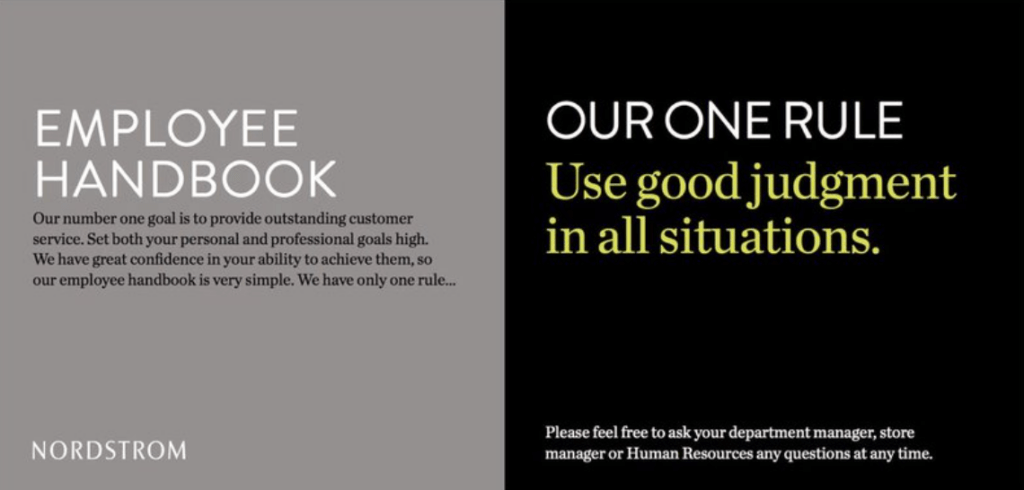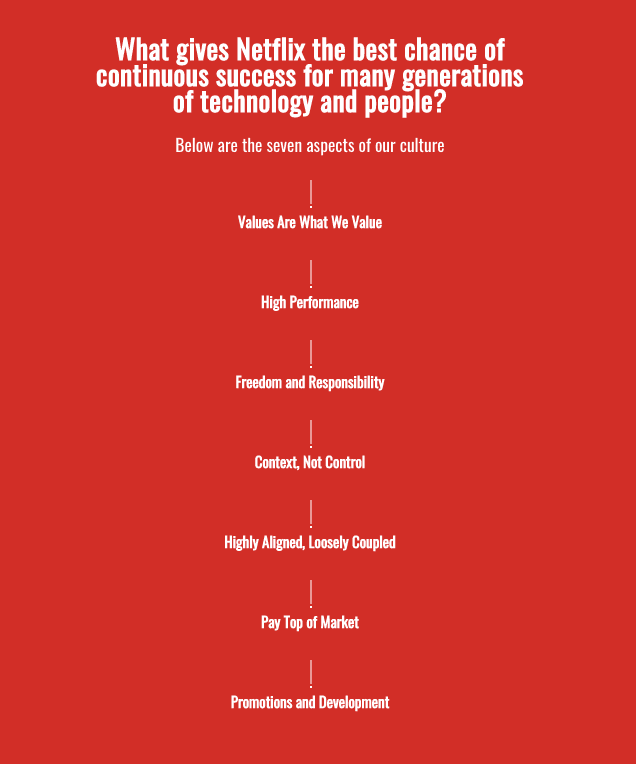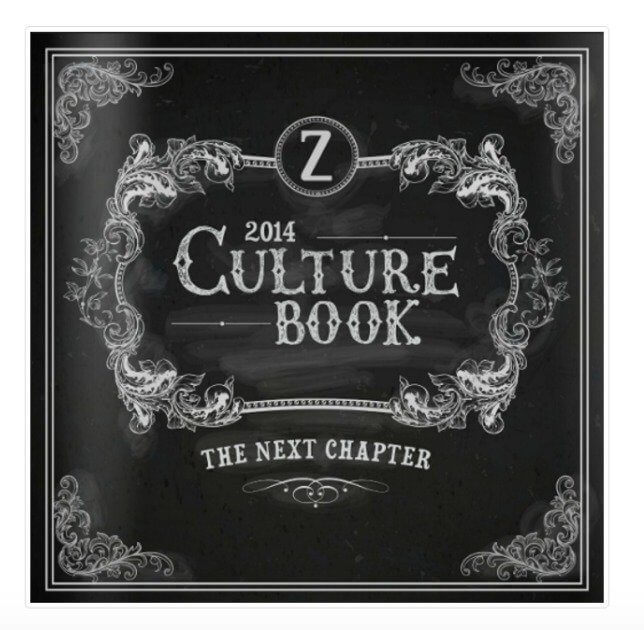Ahh, the employee handbook. This traditional how-to guide helps new hires settle in and seasoned employees stay in line with company culture, policies, and procedures.
Sounds great. But there’s one major problem: most employees don’t bother to read them.
Today we’re sharing why and how to avoid common employee handbook mistakes.
Why aren't employee handbooks read?
According to research from GuideSpark, a whopping 43% of millennials don’t read employee handbooks from cover to cover, while 11% have never even opened one — and considering millennials will make up 75% of the workforce by 2025, these stats are worth paying attention to.
So, what’s caused the employee vs handbook standoff?
It’s simple: too often companies make simple mistakes that turn off employees from the get-go.
From the technical jargon to the million and one pages about the same thing, employee handbooks are often overcooked and tough to wade through — and in the era of snackable content and 5-second attention spans, it’s no surprise many employees just aren’t interested in reading it.
If this is sounding all too familiar, don’t worry — we’ve got you. In this ultimate guide, we’ll share some of the top avoidable mistakes, pinpoint the companies that have nailed new-era employee handbooks, and show you how to create a handbook your whole team will love.
What is an employee handbook?
An employee handbook (aka playbook, guidebook, manual) is the most important document in your company. This must-have piece of employee literature helps define your policies, procedures, and company culture, and ensures the whole team knows how the company should run.
Here’s a brief rundown of what a basic handbook includes:
- An introduction to your company and the way you work
- Company mission and values
- Key pointers on company culture
- A rundown of all the key company policies and procedures
- Clear workplace expectations for employees and employers, including any legal aspects
A great employee handbook will strengthen the onboarding process, making it super simple for new hires to feel right at home from day one. Just remember to share your handbook with new hires before they start, so they can hit the ground running from day one.
4 common employee handbook mistakes (and how to avoid them)
These days, employees want to hear the human behind the handbook.
From onboarding processes to internal comms, a little creativity and lotta humanity go a long way in your employee handbook — and that means avoiding simple mistakes that can damage your brand and leave employees feeling truly underwhelmed.
Here are 4 simple mistakes that can lead to employees skipping the handbook (and how to avoid them):
1. Copy-and-pasting the old handbook
Every HR pro loves the good ol’ copy-paste function. But when it comes to creating a memorable employee handbook, fresh content is the only way to go — and that means updating everything from how it looks to how key policies work.
Here are a few pointers on how to breathe fresh life into your employee handbook:
- Check out how other companies have aced their handbooks (more on this in a minute).
- Pinpoint which processes need simplifying or changing, and book in some strategy meetings with the right teams — this might take extra time, but it’ll be well worth it when your employees can actually understand and apply your procedures.
- Create a digital version that employees can access on the go.
🔥 Stand out from the crowd: Use a smart knowledge platform (like Whale 😉) to make sure your employee handbook looks as epic as possible.

2. Getting stuck in the detail
One of the biggest mistakes happens when companies try to legislate for every behavior — not only does it make employees feel small, it also leaves you with a super long and boring employee handbook that no one wants to read.
Remember, these are adults you’re speaking to — and they work best when they’re treated as equals. At the end of the day, no one likes being lectured, so stick to the important things and make your do’s and don’ts as brief as possible.
Here’s how:
- Slim down any sections that tell employees what they can and can’t do.
- Drop anything that’s common sense, and just stick to nuanced company-specific instructions employees actually need to know.
- Read (and then re-read) sentences to trim any excess wording. Make sure you’re only saying things once, in the simplest form possible.
🔥 Stand out from the crowd: Ever heard of micro-learning? It’s time you do. With tools like Whale, you can avoid 1000-page manuals, and create and share bite-sized content that’s easy to consume and apply.
3. Using too much technical jargon
In the age of memes and 120-character posts, no one wants to wade through pages of technical lingo.
In fact, employees want to hear your brand voice throughout their experience. According to LinkedIn, great internal comms and employer branding can reduce turnover by 28% and cost-per-hire by a whopping 50%.
Here are a few tips to help you ditch the technical jargon:
- Write your employee handbook as though you’re talking to a friend. Would a non-expert understand what you’re trying to say? If not, rephrase it.
- Your marketing team has spent a lot of time and energy developing a strong brand voice. If it’s good enough for your customers, it’s good enough for your employees — so use that voice throughout your handbook.
- It’s okay to make your employee handbook entertaining. In fact, that’s what employees crave. Show your human side by adding in memes, in-jokes, and even videos.
🔥 Stand out from the crowd: Use a smart knowledge platform to integrate gifs, images, and video into your employee handbook. With a tool like Whale, you can even record your screen to create super engaging step-by-step video tutorials.
4. Forgetting to update it
Keeping your employee handbook updated is more important than ever — but thanks to Covid, the rise of remote work, and advances in tech, many HR pros are struggling to keep up with shifts in policies and processes.
To make sure your employees are always in the know, create an updating process that includes regular employee handbook updates and notifications for employees.
Here’s how:
- Assign different handbook sections to subject matter experts within your teams, and let them know it’s their job to keep it up to date.
- Send regular update reminders to make sure nothing gets missed.
- Every time your subject matter experts update, make sure the right employees actually read the new information.
🔥 Stand out from the crowd: The right smart knowledge platform will send automatic update reminders to subject matter experts and employee notifications that remind them to check in with the new info. Even better are the ones that allow you to see which employees have actually read your updates.
Other common handbook mistakes
Other common employee handbook mistakes include;
- Creating rigid policies
- Writing in formal, cold language
- Not sharing the handbook
- Failing to review material annually
- Making the handbook long and boring
The best way to avoid such mistakes is checking "would I want to read this?" and asking team members for feedback.
The 3 best employee handbook examples
Big brands are leading the way with 21st-century onboarding.
Here are some examples from brands already killing it:
1. Nordstrom
Women’s fashion retailer Nordstrom has taken everything you thought you knew about employee handbooks and trashed them. Goodbye dense jargon-packed handbooks, hello two-page simplicity.
Nordstrom’s employee handbook approach is simple: two pages, one rule. [Image source: Business Insider]

2. Netflix
Video streaming giant Netflix knows great content. And when it comes to creating a binge-worthy employee handbook, they don’t hold back. Think: Simple wording, easy-read storytelling, and a focus on company culture.
Netflix keeps their employee handbook simple with human wording and clear graphics. [Image source: AirMason]

3. Zappos
When it comes to company culture, online shoe store Zappos always puts its best foot forward — and from comics to The Culture Book, Zappos is the undisputed king of creative employee handbooks.
Zappos has the employee handbook sussed with stand-out creativity. [Image source: Zappos Insights]

Top handbook tip: be human
There seem to be two extremes; handbooks which are made from AI and are up to date but have no human elements. OR handbooks which are outdated and often stuck in a drawer somewhere.
Handbooks that aren’t used make the most important document in business, well… unimportant.
The answer? Be human!
But from simplifying technical terms to adding hilarious human-focused content, there are a million and one ways to create an employee handbook that boosts your brand, engages employees, and makes the onboarding process (and beyond) feel like part of the fun.
With a dash of creativity, a super-focused strategy, and real-life human lingo, you’ll be well on your way to creating an employee handbook your teams truly love.
FAQs regarding employee handbook mistakes
How to ensure employees read the employee handbook?
You can try and force employees to read your employee handbook but that rarely ever works. Instead;
- Create an employee handbook that is interesting
- Ensure the handbook forms part of every new hire’s onboarding journey
- Have it accessible for team members. (That’s why we developed the Whale Chrome extension)
- Review your handbook annually
- Use quizzes to test whether content in the handbook has been understood
Who should write the employee handbook?
Whilst it’s typically Human Resources (HR) who writes the employee handbook, the very best employee handbooks are written by founders.
The most important element of writing an employee handbook is to get the feedback of team members.
Bottom line
Ready to bring your employee handbooks firmly into the 21st century?
Download our eBook "How to integrate and optimize your onboarding processes" or you can also check out "Everything there is to know about employee onboarding and training."

How to Integrate and Optimize your Onboarding Processes
In this ebook "How to integrate and optimize your onboarding processes", we give you everything you need to understand and implement the three most important types of training.





